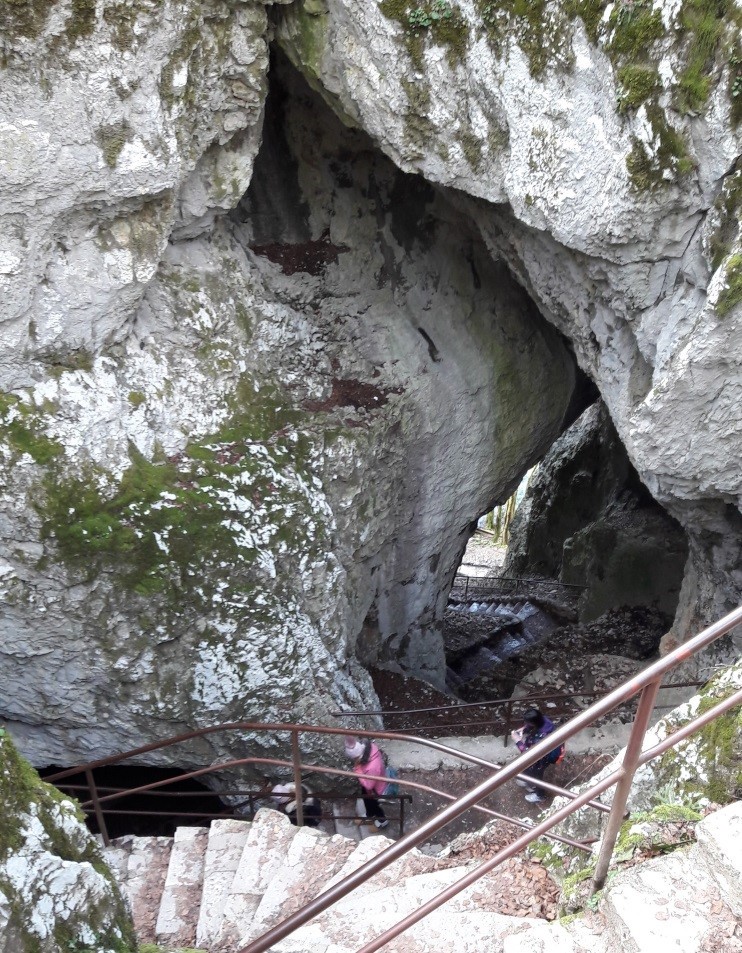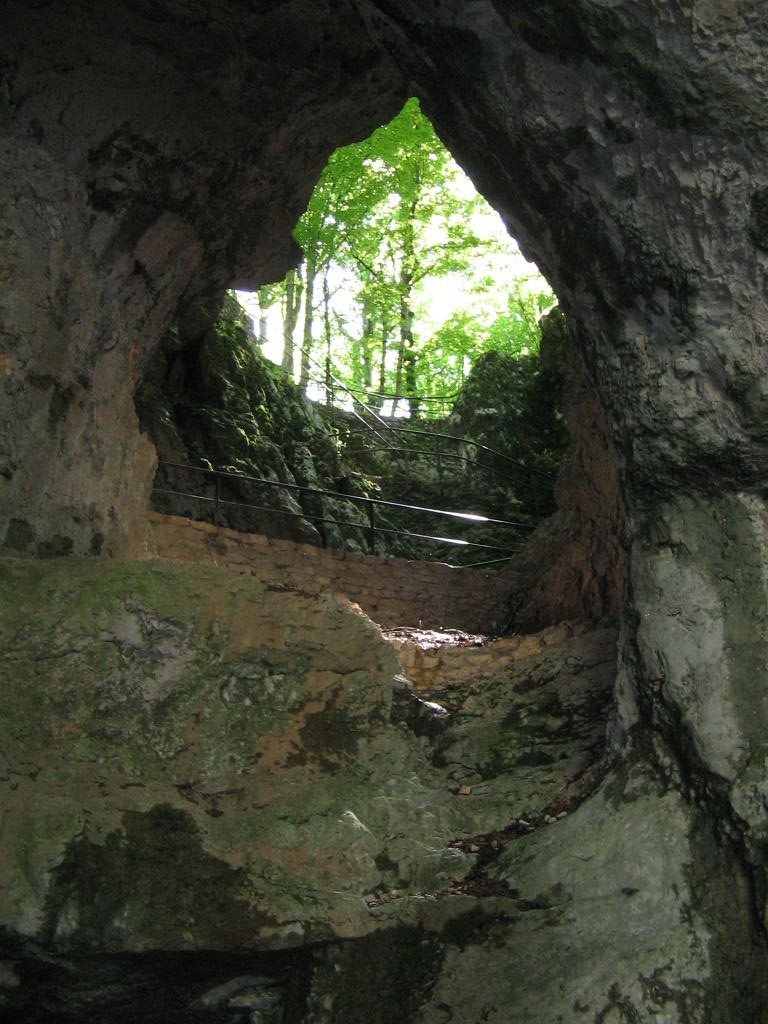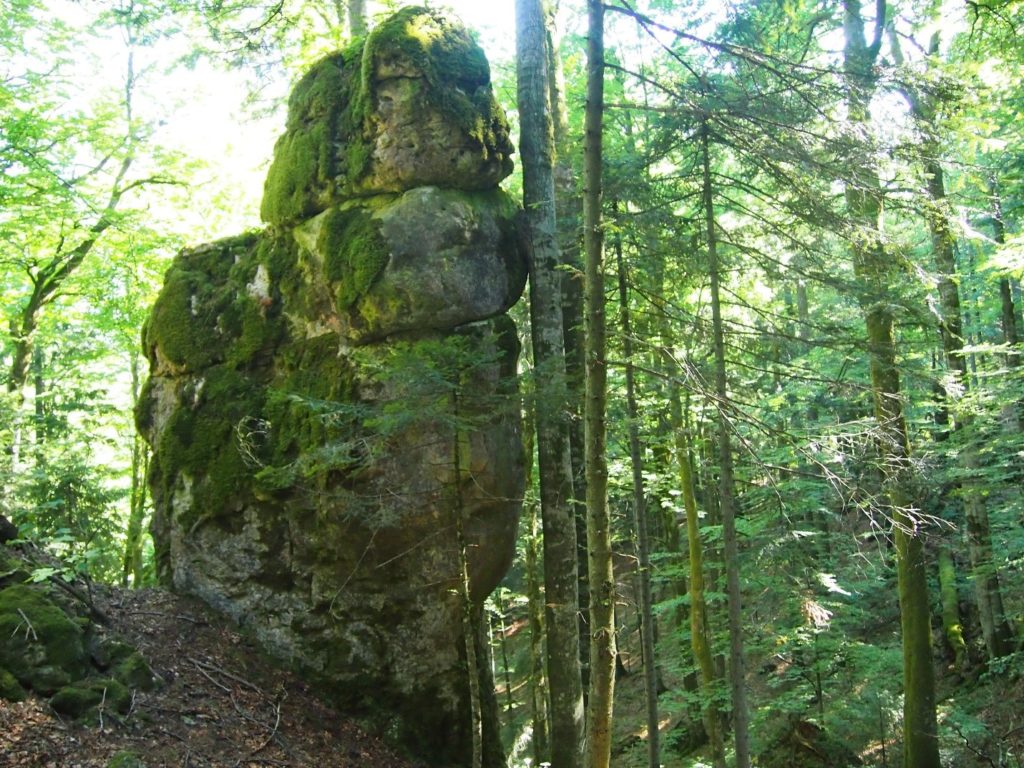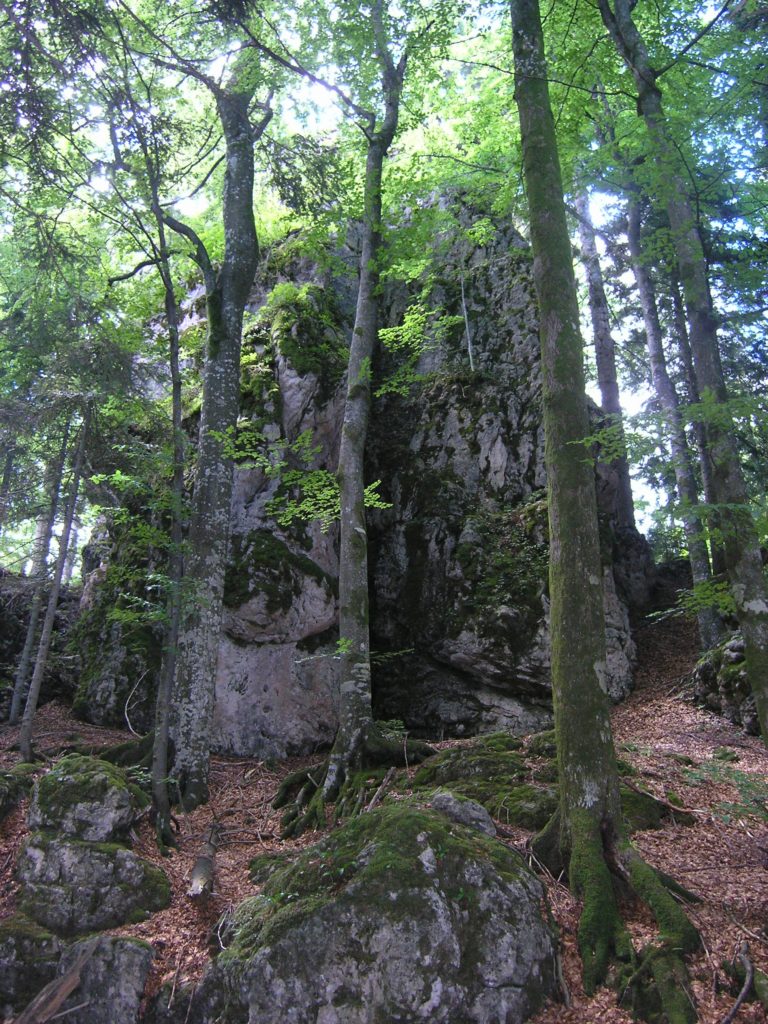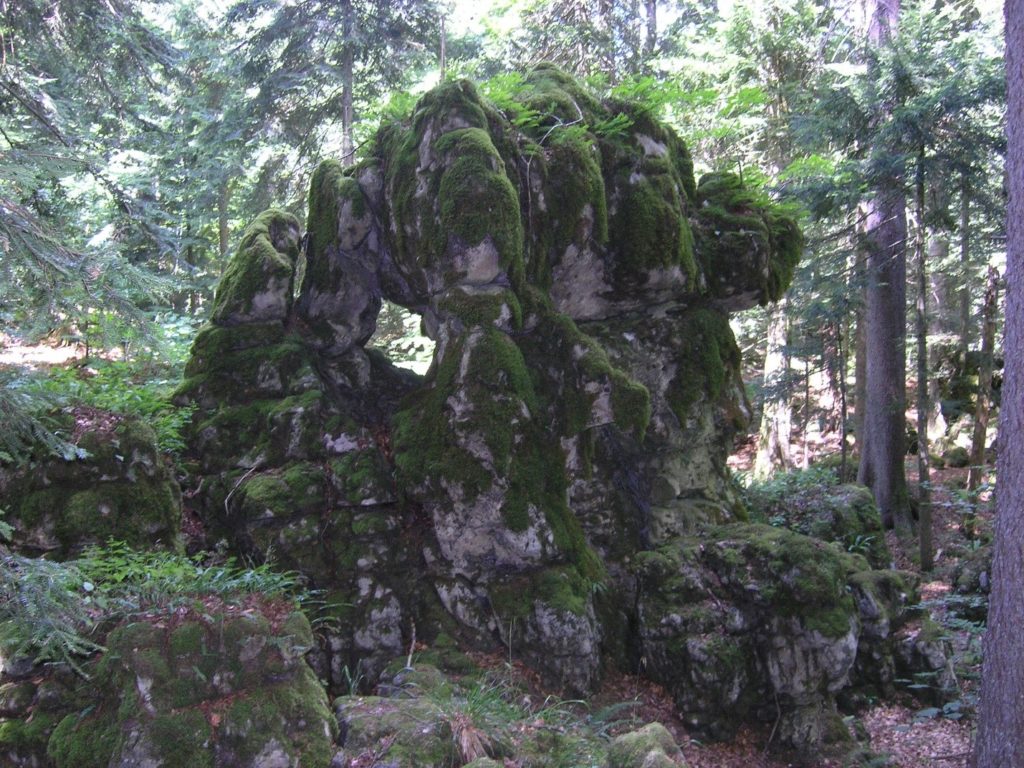The Plitvice Lakes area is made of carbonate rocks (mostly limestone and dolomite) from the Mesozoic Era, on which karst terrain rich in surface and underground landforms formed. You can see some of them while driving or strolling around the Park, but many of them are hidden underground, waiting to be discovered and explored.
The karst terrain is primarily associated with carbonate rocks (limestones and dolomites) due to their high sensitivity to chemical and mechanical weathering, as well as the influence of tectonic forces (faults, folds, fissures, etc.). Water enriched with carbon dioxide penetrates through fissures in the carbonate substrate, dissolving the rock in the substrate and creating various surface (limestone pavement, funnel-shaped sinkholes, karst fields, solution pans, peaks, towers, columns) and underground (pits, caves, caverns) karst landforms.
ŠUPLJARA CAVE
The water that percolated through the cracked surface slowly dissolved the limestone rock. This caused the underground cracks to widen and thus channels were created. The carving of the Lower Lakes canyon and the widening of underground cavities under one sinkhole located on the edge of the canyon led to instability and the collapse of the bottom of the sinkhole, i.e. the vault of the cave. That is how access to hidden spaces and a passage to today’s Lake Kaluđerovac came to be. An unobstructed vertical passage connects the side channels and halls. The two halls facing the passage are very simple, mostly without or with very few cave formations, while in the halls in the longest side channel are decorated mainly with tuberous forms.
KARLOVCI
In the north-western area of the Park, near the Čorkova Uvala rainforest, there is an interesting geomorphological site called Karlovci, which you can see by walking along the part of the hiking trail that passes through Čorkova Uvala.
It features vertical blocks of rock (monoliths, columns) of different shapes and dimensions, and they look as if they were brought there from another place. Such karst landforms are formed as a result of selective dissolution of harder rocks (dolomites) which are more resistant to chemical weathering than the surrounding rocks (limestones), meaning that the chemically resistant rocks, dolomites, remain protruding from the ground, while the limestones weather away. The Karlovci area is built of sedimentary carbonate rocks, namely calcareous dolomites and pure dolomites, the sedimentation of which occurred during the Upper Jurassic period, approximately 160 million years ago.

